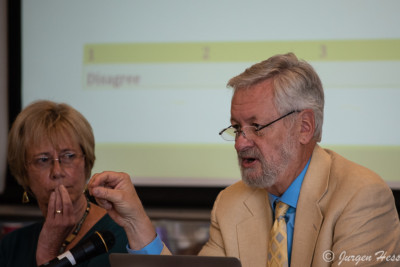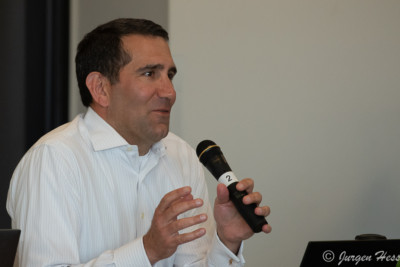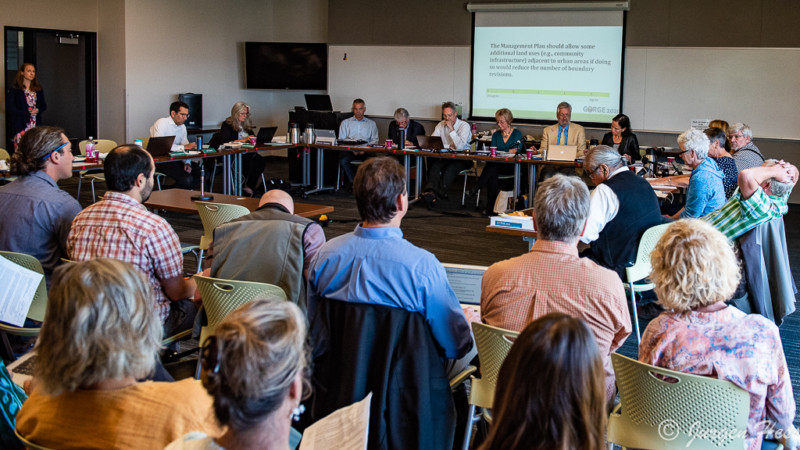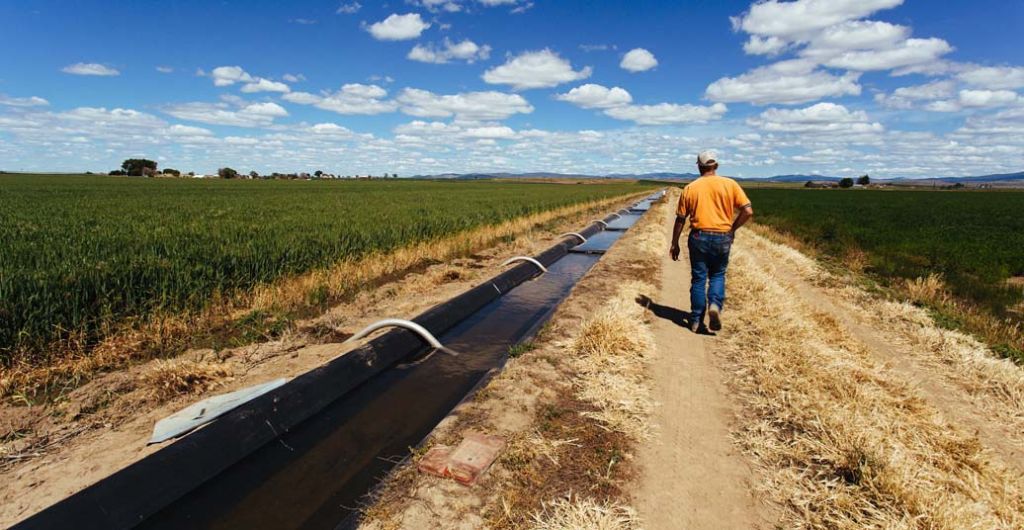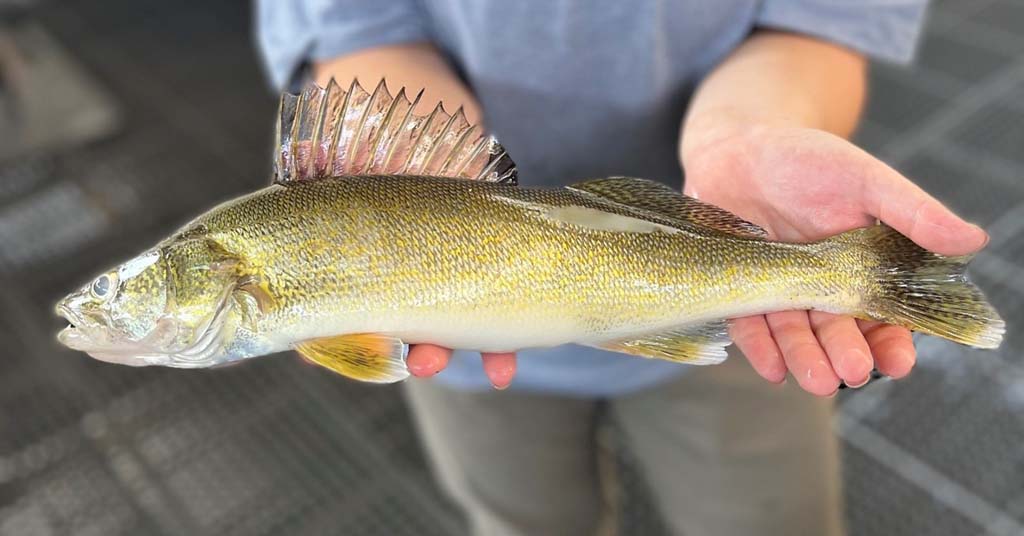By Jurgen Hess. June 14, 2018. “This is not opening Pandora’s box, rather opening Pandora’s shipping container,” said Columbia River Gorge Commissioner Robert Liberty. It would open up not just one exception, but perhaps unlimited exceptions. The main and most controversial topic of the Commission?s June 12 meeting in The Dalles was defining a process of revising the Urban Area boundaries.
Urban Areas are one of the three land categories in the 290,000 acre Columbia River Gorge National Scenic Area. When Congress passed legislation creating the Scenic Area, it delineated 13 areas as ‘Urban Areas.’ In this category are The Dalles, Hood River, Cascade Locks in Oregon; and Stevenson, Dallesport, White Salmon in Washington. The Urban Areas are exempt from Scenic Area regulations, unlike the other two categories: Special Management Areas and General Management Areas.
There was a lot of jockeying in 1986 as to where Congress would set the Urban Area boundaries. There has been contention about the boundaries ever since.
The Scenic Area Act includes a process whereby those boundaries could be revised, known as the Section 4(f) requirements. The section states: revisions can only be ‘minor;’ there must be a ‘demonstrable need;’ Scenic Area resources must be protected; and the revision would result in ‘maximum efficiency of land uses.’ As one can imagine, these standards are difficult to interpret. While Urban Area boundary changes have been approved for Stevenson and Cascade Locks, most proposals have been denied or put off as the staff tries to define a clear process.
In April 2009, the Commission Rules Committee defined ‘minor revisions’:
“…do not have a significant effect on surrounding lands outside of the Urban Area and beyond the immediate area subject to the boundary change or those boundary changes which do not result in a substantial expansion of an Urban Area.”
This year the Gorge Commission once again took up this contentious topic: to further define an Urban Area boundary revision process. The consensus from the first meeting on May 8, 2018 was that Commissioners and the public wanted a high degree of formality in reviewing revision proposals. There was agreement for a process “with a clear and concise way to get approval.”
This week at their June 12 meeting Commission Staff Counsel Jeff Litwak asked Commissioners and the public if the Commission “should allow some additional land uses adjacent to urban areas, if doing so would relieve some ‘demonstrable needs’ to revise urban area boundaries.” Litwak explained he meant possible land uses that might be needed by an Urban Area, for example a water tank or sewer system. He asked each Commissioner and pubic commenters to use a number system to define their opinion: #1 being extreme dislike and #5 like very much.
Commissioner Keith Chamberlain favored the proposal and cited a recent water tower project in Carson that would fit under this concept. He voted in favor of the proposal with a #4. Robert Liberty said that the Carson water tower was allowed under the existing Plan regulations. He was concerned that the proposal might be used to justify commercial uses, private air strips, private schools and subdivision lots. He voted strongly against the proposal with a minus #5 on the scale. Commissioner Anton Minthorn was concerned with precedence setting and voted #3.
Mosier Mayor Arlene Byrnes said there should be a focus on protection and voted #1. Underwood resident Bill Zimmerman stated that Urban Area boundaries should be kept and was concerned with water supplies. He voted #1. Friends of the Gorge staff Michael Lang said that municipal utility uses are already allowed outside UA?s and there should be a sharp distinction for UA’s; he voted #1.
Of the 11 Commissioners three voted #1 (or less than 1), one voted # 2, three voted #3, three voted #4 and one voted #5. Of the eight public comments all except one voted #1. What this means is that there was no consensus.
Litwak also asked the Commission to consider another question based on the Commission’s 2008 Future Forum, where they met with key stakeholders and residents. “Should ‘demonstrable need’ be based on achieving the Gorge community’s shared vision and strategies identified in the Columbia Gorge Future Forum.” Both the Commission and the public strongly felt that the Future Forum document was not suitable for defining ‘demonstrable need’ and should not replace planning standards and metrics, such as population growth, land use utilization, available land for growth, etc.
The Commission made no decisions as to the Urban Area revision process and standards. There will be more opportunities for public discussions, Commission Chair Lorrie DeKay said, and the Commission will also be meeting with selected focus group members. The discussion continues.


